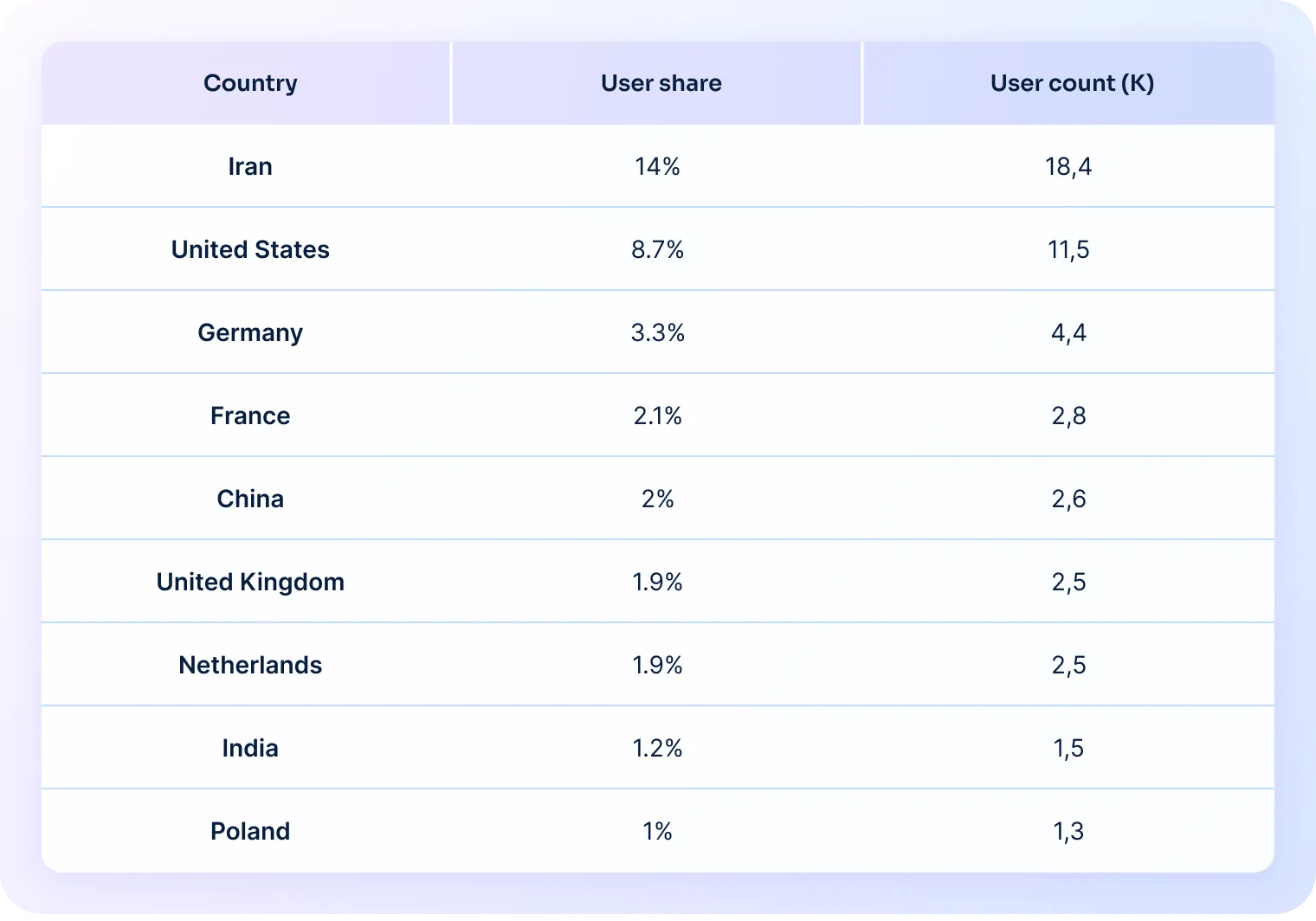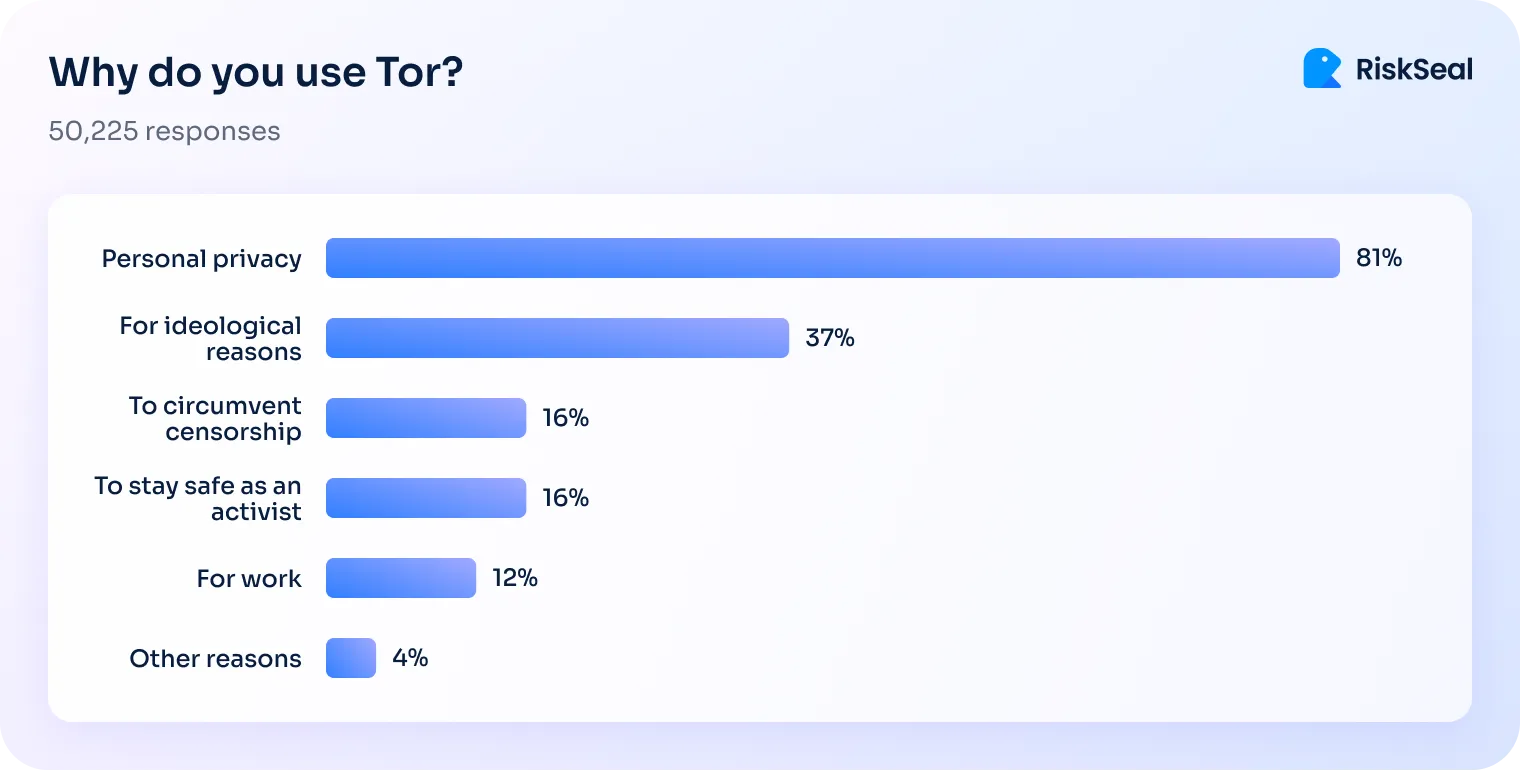Learn what is Tor and how credit fraudsters use it to fool risk teams by hiding who they are.

In 2024, scam cases rose by 56%, and related losses jumped 121%. Overall, reported fraud losses hit $12.5 billion, according to this report.
While Tor Browser has many legal uses, it's often linked to scam activity. This means risk teams should monitor applicants who use it more closely.
Tor is a free web browser that hides your identity by bouncing your internet traffic through different servers worldwide. Also known as The Onion Router, it helps users stay anonymous online.
Tor’s average daily users and top countries from September 2023 to October 2024:

The Tor network has around 2.5 million active daily users. Like many tools, it can be used for both good and bad purposes.
The good purposes to use Tor for include:
The survey by the Tor team showed the main reasons people use the browser:

A bar chart titled "Why do you use Tor?" based on 50,225 responses. The reasons are "Personal privacy" at 81%, "For ideological reasons" at 37%, "To circumvent censorship" and "To stay safe as an activist" are both at 16%, "For work" at 12%, and "Other reasons" at 4%.
Due to its identity-hiding features, Tor is associated with criminal activity in fintech markets. This browser helps fraudsters to slip past standard checks during loan applications.
Here’s why Tor raises red flags in lending:
While not always fraud, this activity often signals a need for closer review by risk teams.
The method that allows lenders to detect Tor Browser usage and gather key details about a borrower's connection is called IP address lookup, which forms a core part of IP risk assessment.
IP address lookup is a technique that analyzes a user’s connection details to provide context beyond the application data.
By adding this layer of intelligence, lenders can refine their risk models, uncover hidden patterns, and better evaluate the credibility of each applicant’s digital environment.
How it improves risk insights:
IP address analysis gives lenders a clearer picture of who's applying without slowing down the process.
As part of IP risk management, it strengthens risk models, improves decision accuracy, and helps prevent fraud while keeping the borrower experience smooth.
As fraud tactics grow more sophisticated, tools like Tor Browser make it easier for bad actors to stay hidden.
What this means for risk managers:
By using proactive tactics like IP analysis and alternative data scoring, lenders can spot this behavior early and make smarter, safer lending decisions.